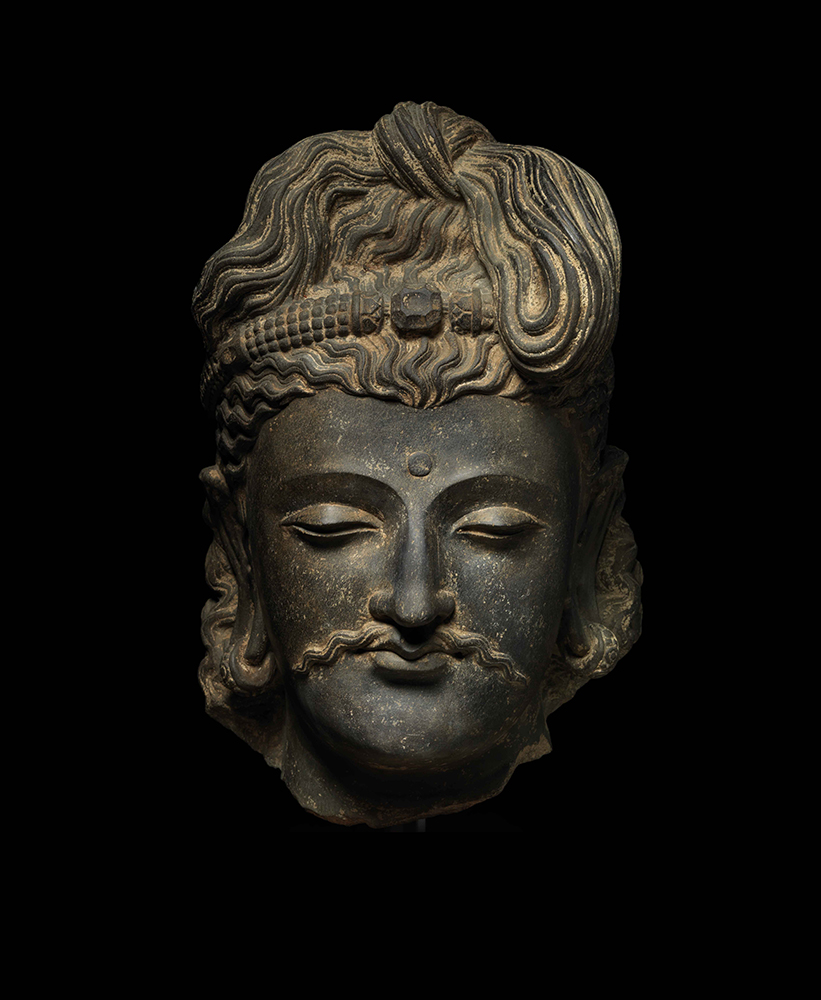
The second to third centuries of the Common Era marked the apogee of the Golden Age of the ancient Kingdom of Gandhara, a time when human representations of the Buddha and Bodhisattvas bearing unmistakable Greco-Bactrian characteristics would become the enduring foundation of Buddhist iconography to emerge from this important moment in the classical period of Buddhist art history.
The Kingdom of Gandhara, led by the powerful Buddhist kings and nobility of the Kushan dynasty, was well situated to capitalize on the lucrative commercial trade that traversed its vast region by way of the uttarapatha (the Northern trunk road), a major artery of the fabled Silk Road that facilitated the movement of goods, foreign ideas, and nomadic traders from the Hellenized Orient to the west, the steppes of Central Asia to the north, and from China to the east.
The Ganadharan region itself was vast, territorially encompassing northern India, what is now Pakistan, the steppes of Central Asia, and much of present-day Afghanistan. The Kushan Dynasty was enriched by its position in intraregional trade as it absorbed the cultural influences of its Greco-Bactrian and even Parthian precedents. The kingdom’s economic strength was in turn matched by a military prowess on par with the armies of China, Iran, and India. The material wealth and cosmopolitanism of the kingdom is deeply inflected in the richness of its artistic expression, as regional artisans produced an extraordinary output of classically distinguished pieces for the Kushan nobility.
The Buddhist art within the Kushan dynasty is immediately recognizable for its varied influences, particularly in its representations of the Buddha and the Bodhisattvas Maitreya (the Future Buddha) and Avalokitesvara (the Buddha of Compassion). These images of the Bodhisattva, too, as part of the Mahayana tradition (the Greater Vehicle), represented an important development in the iconography of Buddhist art, as Bodhisattva veneration would inform the foundations of the kind of Buddhism that spread further into the Far East and into the Himalayan region.
This remarkable example of the genius of Kushan artistry, richly executed in grey schist, combines the naturalism of the classical Greek style with the Asian serenity of Buddhist art. Bodhisattva sculptures from this period show the degree to which they were venerated by the nobles and the subjects of Kushan courts. In addition to the fine shaping of the face, including the classically aquiline nose, this piece features an elaborated coiffure that radiates from the top of the head and is fashioned in a loosely parted topknot. The locks overflow a finely beaded diadem. The hair is at once animated and sensual, and it has been styled in such a way as to accentuate his princely status. The gemstone adornment that crowns the center of the diadem, and the heavy rings that hang from the elongated earlobes, symbolize the Bodhisattva’s earthly return in the service of the enlightenment of all sentient beings. The heavy lidded eyes similarly convey the contemplative serenity one associates with Buddhist imagery, while a narrow mustache grows outward from above the subtly curved upper lip just above a handsomely shaped chin.
Price On Request
|